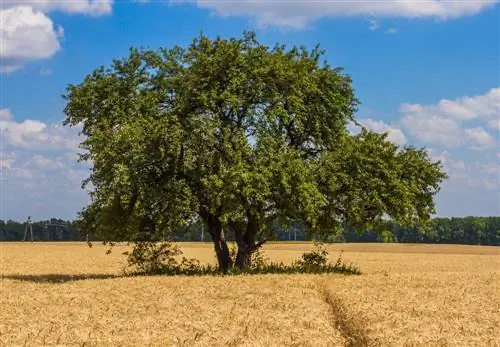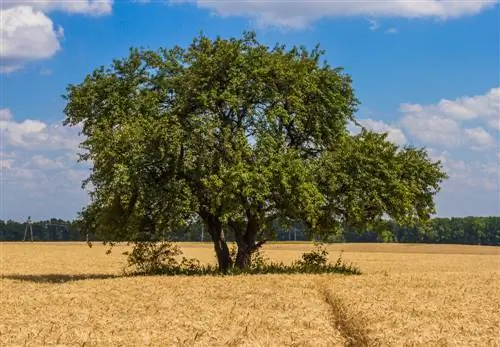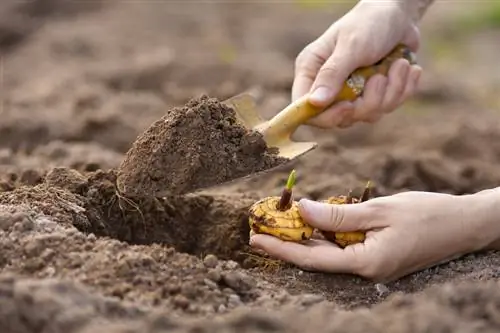- Author admin [email protected].
- Public 2023-12-16 16:46.
- Last modified 2025-01-23 11:21.
The elm is no stranger to deciduous trees. You have probably already seen the deciduous tree on walks in the forest. The elm tree is easy to recognize by the typical shape of the leaves. Maybe you own a piece of furniture made from elm wood. This is known for its good quality. But did you know that only three of many different species occur here in Europe? The Asian continent has a much greater diversity of species. Unfortunately, the elm bark beetle has been endangering populations since 1920, the year it was first discovered. He brings in a threatening fungus. The following profile gives you a clear overview of these and other facts and properties of the elm. The plant occurs both as a shrub and as a tree. This profile treats the elm as a tree.

What are the properties of the elm as a tree?
The elm is a deciduous deciduous tree that can be up to 400 years old and 30-40 meters high. Typical characteristics are asymmetrical, jagged leaves and inconspicuous flowers. Three species are represented in Europe: field elm, white elm and wych elm. The wood is used to make furniture.
General
- German name: Elm
- Latin name: Ulmus
- Tree family: Deciduous tree
- Types: around 30 pieces
- maximum age: up to 400 years
- deciduous, deciduous
Optical features
Growth
maximum growth height: 30-40 meters
Root formation
- Taproot
- With increasing age, a heart root forms
leaves
- asymmetric
- jagged
- stemmed
- roundish, egg-shaped
- Danger of confusion with hazel
- young leaves are edible
Bloom
- Flowering period: February to April
- Hairy
- Inconspicuous
Fruits
- small nuts
- up to 2.5 cm tall
- can only germinate for a short time
- ovoid, roundish
- called Samara
Wood
- cork wing bark rarely forms
- no thorns or spines
- yellowish to reddish
- porig
Occurrences
Dissemination
- only in the northern hemisphere
- two thirds of all species are native to Asia
- Only three species are represented across Europe: field elm, white elm, mountain elm
Preferred Location
- in forests
- in moderate heat zones
Usage
- the sturdy wood is made into furniture
- Fruits are edible
- some parts of the plant are used in traditional Chinese medicine
Diseases and pests
- Elm disease
- Elm bark beetle
- due to frequent fungal infections, old elms are very rare






